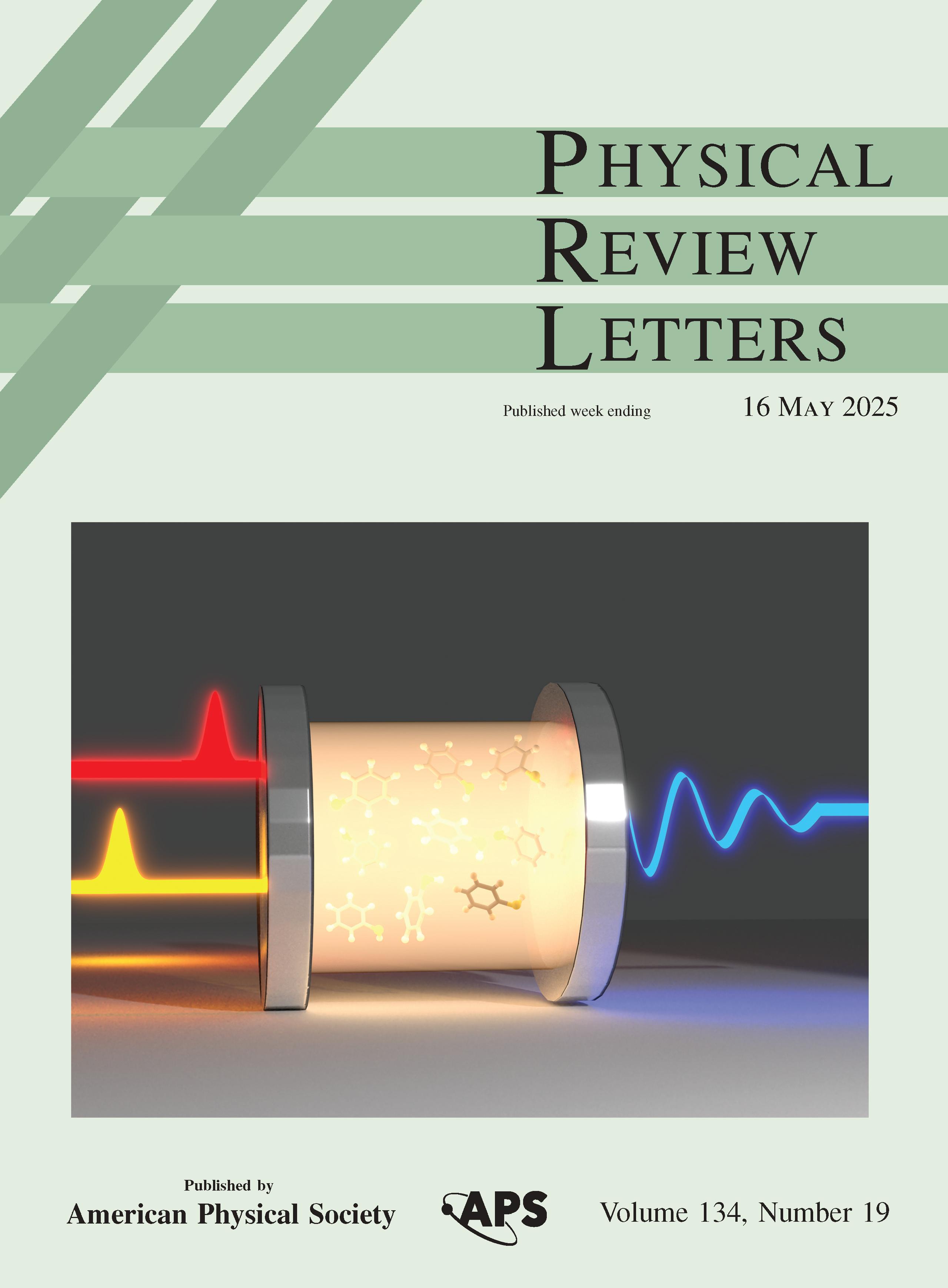Selective yet Inclusive: Publishing High-impact Physics Research
Physical Review Letters (PRL), published by the American Physical Society (APS), is a peer-reviewed journal whose mission is to publish short, high-impact articles across all areas of physics. As PRL's lead scientific advisor, I would like to share my unique perspective on the journal.

The venerable Physical Review, launched in 1893, was taken over by APS in 1913. In the 1950s, physics was booming with rapid discoveries, in particular in nuclear and particle physics, and Physical Review quickly became a reference journal. Its "Letters to the Editor" section, created in 1929, grew so much that in 1958 it was separated from the journal and became the standalone PRL.
Launched as an "experiment," PRL quickly became a convenient home to researchers needing a faster way to share major discoveries, without waiting for the lengthy review and publication process typical of full-length articles. Over the years, PRL gained a global reputation and is now the most cited physics journal worldwide with an impressive record of publishing high-impact research. Selective yet inclusive, it offers a fair and comprehensive account of all that is happening in physics and related areas.

Prioritizing quality over hype
PRL's success is built on its editorial commitment to seriousness and quality. The editorial team focuses on identifying research that pushes the boundaries of physics, rather than following fleeting trends. Making these editorial decisions requires a deep understanding of the field, which is why our editors remain actively engaged with the global physics community. They attend conferences and visit universities to stay ahead of emerging research, and engage with researchers to encourage submissions.
The rigorous peer-review process ensures that only the highest-quality research is published. PRL's review process relies on community input in an unusually important part for a selective journal. Desk rejection remains low and most papers are sent out for review. Editors make decisions based mostly on the information at hand, i.e. the opinions expressed by reviewers, not only on the technical soundness of the research, but also on subjective criteria of importance and impact. This largely isolates PRL from fashion waves and hype, and ensures that all subfields are considered worthy of publication.
The result is that every week, all year long, PRL offers a fair and comprehensive account of the most important developments in every area of physics, theoretical, experimental, applied and interdisciplinary.
Supporting emerging research and scientists worldwide
PRL's impact extends beyond academia, influencing technology and industry. Research published in the journal has contributed to many fields of science and engineering. As the research landscape evolves, PRL continues to widen its scope. Current topics of expansion include AI, astrophysics, physics of climate, materials science, and all manners of quantum technology.
PRL also plays a vital role in supporting emerging scientists, engaging them early in the review process, and putting forward the papers they publish in many occasions. Many Nobel Prize-winning discoveries were first published in PRL, long before the prize was awarded, underscoring the journal's role in recognizing pioneering contributions at an early stage.
The journal publishes research from all over the world. We strive to reflect this diversity when choosing referees, our 100-strong editorial board is populated by prominent physicists from all regions of the world, and the editors themselves are from different countries. This diversity of viewpoints and cultures is a crucial asset of PRL.
PRL and China
Chinese scholars have greatly increased their contributions to PRL in recent years. Both the quantity and quality of their research have steadily grown, so much so that China currently shares the top spot with the U.S. in the number of papers published in the journal. This success is particularly impressive in high-impact areas such as quantum information and condensed matter physics. The number of Chinese researchers on PRL's editorial board is increasing, highlighting the rising influence of the country in global physics research.
PRL's global role and stature in the current scientific publishing landscape are unique and perhaps more vital than ever. Society-run and community-based, I hope it continues to be the go-to journal where the global physics community meets, and its Chinese component plays the important role it deserves.
The article is written by Hugues Chaté, who is the lead editor of Physical Review Letters.
●Journal Review
Physical Review Letters (PRL) has consistently driven scientific breakthroughs with its rigorous peer review and forward-looking vision. For instance, many landmark achievements in quantum information science were first published in PRL. Although some comprehensive journals such as Nature and Science surpass PRL in the impact factor, PRL's unparalleled paper quality and academic credibility make it an indispensable core reference for physics researchers.
For China's academic community, PRL holds particular significance. For a long time, it served as the most critical bridge connecting domestic scholars with global frontiers. Today, China has become one of PRL's largest contributors, with particularly outstanding contributions in fields like quantum information and condensed matter physics. PRL's steadfast commitment to academic integrity exemplifies the very spirit of scientific rigor in physics.
—— Pan Jianwei, a full professor of physics at the University of Science and Technology of China, an academician of Chinese Academy of Sciences, and a fellow of the World Academy of Sciences.






